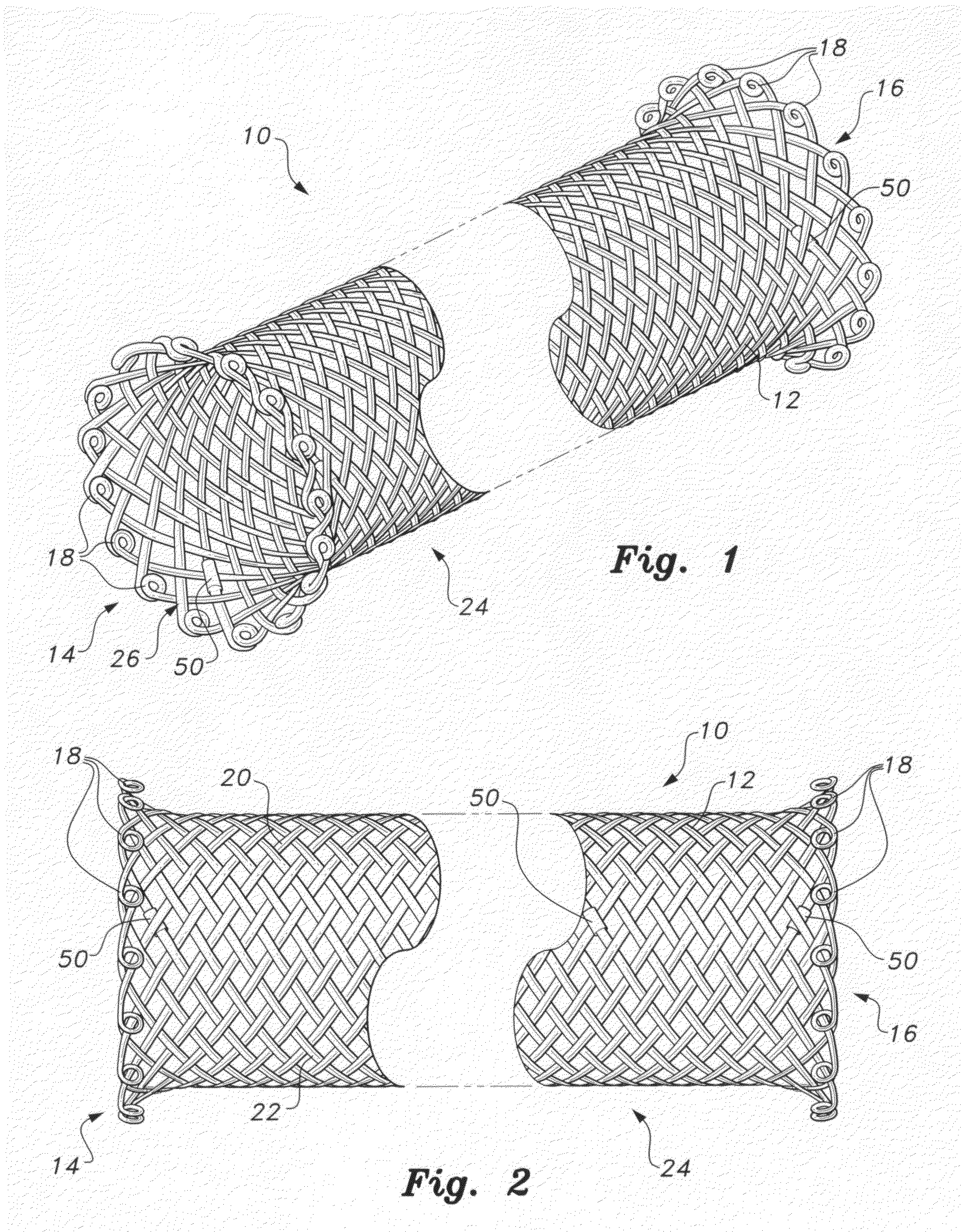Self-expanding biodegradable stent
a biodegradable, self-expanding technology, applied in the field of medical implants, can solve the problems of serious tissue injury, stents made from such materials suffer the disadvantage of having to be expanded by using, e.g., balloons, etc., and achieve the effect of reducing the possibility of trauma
- Summary
- Abstract
- Description
- Claims
- Application Information
AI Technical Summary
Benefits of technology
Problems solved by technology
Method used
Image
Examples
Embodiment Construction
[0020]The self-expanding biodegradable stent 10 is preferably formed from a single strand of resilient, biodegradable material, such as a polydioxanone monofilament fiber 12. As best shown in FIGS. 1, 2 and 3, the longitudinally opposed ends 14, 16 of stent 10 are flared and include a plurality of loops 18 formed from fiber 12. The loops 18 form an atraumatic, blunt surface to prevent trauma or damage to tissue when the stent 10 is inserted into a patient, rather than having the mesh form a plurality of sharp end points, as in conventional mesh stents. As best shown in FIG. 3, sixteen such loops 18 are formed about each end, although it should be understood that these sixteen loops 18 are shown for exemplary purposes only, and that any suitable number of loops 18 may be provided, depending upon the diameter and use of the stent 10.
[0021]As shown in FIGS. 1 and 2, the stent 10 is formed having a substantially cylindrical central portion 24, with longitudinally opposed flared ends 14,...
PUM
| Property | Measurement | Unit |
|---|---|---|
| temperature | aaaaa | aaaaa |
| constant temperature | aaaaa | aaaaa |
| constant temperature | aaaaa | aaaaa |
Abstract
Description
Claims
Application Information
 Login to View More
Login to View More - R&D
- Intellectual Property
- Life Sciences
- Materials
- Tech Scout
- Unparalleled Data Quality
- Higher Quality Content
- 60% Fewer Hallucinations
Browse by: Latest US Patents, China's latest patents, Technical Efficacy Thesaurus, Application Domain, Technology Topic, Popular Technical Reports.
© 2025 PatSnap. All rights reserved.Legal|Privacy policy|Modern Slavery Act Transparency Statement|Sitemap|About US| Contact US: help@patsnap.com



